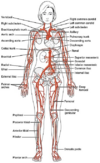Chuckman
Senior Member
I have a friend who spent a lot of time as an ER nurse and when given the opportunity she would ask if they knew of the caliber used on the victim being transported to the hospital. If it was a .45 she would relax a bit because chances were high that they would be DOA. Not always, but enough of the time that it wouldn't be considered a coincidence.
I have seen dead people from a single .22, to someone shot 9 times with a .357 who walked out the hospital four days after admission. Shot placement > caliber. The most I recall was a dude who was shot 15 times--a full mag--with 9mm, and he eventually went home after spending months in the hospitals, having multiple surgeries, and multiple infections.




